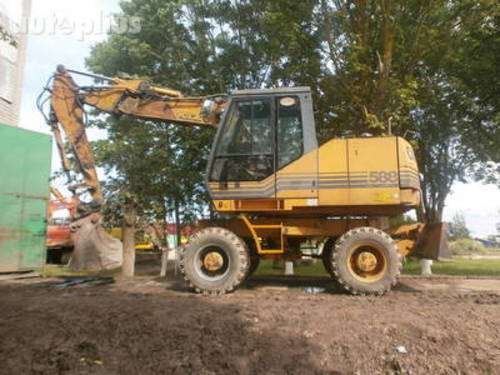Case 588 588c 588p Crawler Excavator Schematic Service Manual
The Service Manual includes detailed info, diagrams, actual genuine image pictures as well as schemes, which provide you full step by step operations on repair, maintenance. omprehensive diagrams, complete illustrations , and all specifications manufacturers and technical information you need is included.
Case 588 588C 588P Crawler Service Manual
technological upkeep & repair procedures for your equipment. The info in this handbook will allow you to find trouble and to comprehend exactly how to repair and preserve your equipment without going into service.
In addition to area financial savings, nice point about having PDF documents rather of a hard-printed handbook is that you can utilize the Search attribute in Acrobat to find merely what your looking for and just print out the specific web pages you need … or all guidebook.
Case 588 588c 588p Crawler Excavator Schematic Service Manual
Serial numbers: ALL
File Format: PDF
Pages: 196
Size: 9Mb
Manual Language: English
CONTENTS AS FOLLOWS:
Fluids and Lubricants
Electrical How It Works
Electrical Specifications and Troubleshooting
Hydrostatic System How It Works and Troubleshooting
How It Works
Hydraulic System Troubleshooting
Pedals and Levers
Electrical and Hydraulic shematic
Essential Maintenance Tips for Case 588, 588C, and 588P Owners
-
Follow Manufacturer Guidelines: Refer to the Case 588, 588C, and 588P operator’s manual for comprehensive maintenance instructions provided by the manufacturer. Adhering to these guidelines ensures proper upkeep and prolongs the lifespan of your equipment.
-
Regular Inspections: Conduct routine inspections of critical components such as the engine, hydraulic system, brakes, and electrical system. Look for signs of wear, leaks, or damage, and address any issues promptly to prevent further damage.
-
Fluid Checks: Check fluid levels regularly, including engine oil, hydraulic fluid, coolant, and brake fluid. Ensure that all fluids are at the appropriate levels and top up as needed following manufacturer recommendations.
-
Filter Replacement: Replace air, fuel, oil, and hydraulic filters at the recommended intervals to maintain optimal engine performance and prevent contaminants from entering critical systems.
-
Lubrication: Proper lubrication is essential for reducing friction and preventing premature wear on moving parts. Grease all lubrication points according to the maintenance schedule provided in the manual.
-
Tire Maintenance: Inspect tires regularly for wear and damage, and maintain proper inflation pressure. Properly inflated tires ensure stability, traction, and fuel efficiency while minimizing the risk of blowouts.
-
Cooling System Care: Keep the radiator and cooling system clean and free of debris to prevent overheating. Regularly inspect hoses, belts, and the radiator core for leaks or damage.
-
Electrical System Check: Inspect wiring harnesses, connectors, and battery terminals for signs of corrosion or damage. Ensure that all electrical components are functioning correctly to avoid unexpected downtime.
-
Operator Training: Properly train operators on equipment operation, safety protocols, and maintenance procedures. Well-trained operators are better equipped to detect issues early and operate the equipment safely and efficiently.
-
Documentation: Keep detailed records of all maintenance activities, including inspections, repairs, and parts replacements. Documenting maintenance tasks helps track the history of the equipment and ensures that maintenance is performed on schedule.

